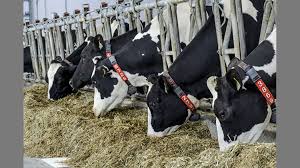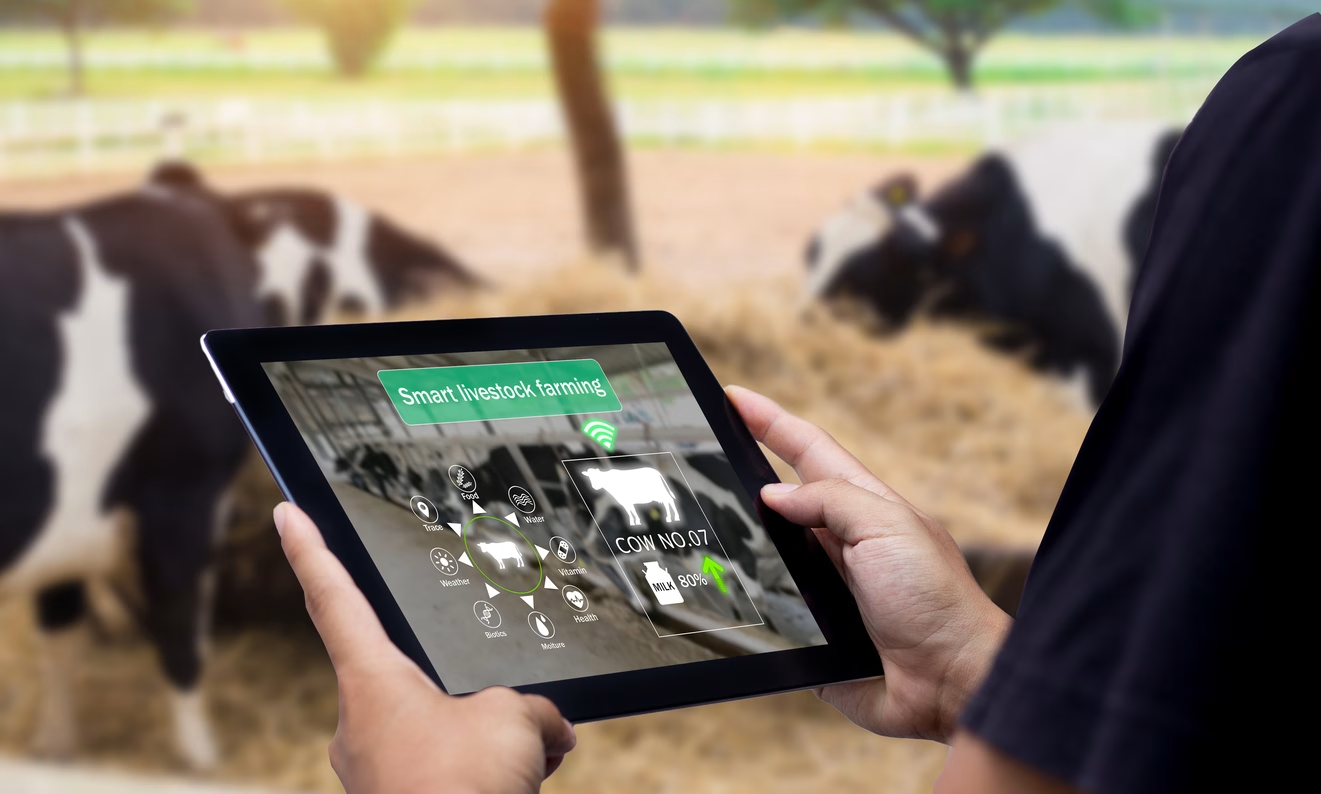Still checking the sky while your profits evaporate? Wake up. While mega-dairies guzzle 142 million gallons daily, smart farmers are letting their phones tell them exactly when and where to water. Welcome to farming’s future – where a $200 sensor is smarter than your neighbor’s weather app, and the smartest drop wins, not the deepest well.
Your grandpa was a hell of a farmer, but his “pray for rain” strategy is bleeding you dry. While you’re checking the sky for clouds, innovative farmers let their phones tell them exactly when and where to water. Welcome to farming’s future – where a $200 sensor is more intelligent than your neighbor’s weather app.
The Hard Truth About Old School Irrigation
Every time you flood a field, you wash away 40% of your water – and your profits. That’s not farming; that’s gambling with your family’s future. Due to outdated irrigation practices and poor resource management, nearly half of your water is lost through evaporation, runoff, or during transportation.
Here’s the brutal math:
- Traditional flood irrigation wastes up to 50% of water through evaporation and runoff processes.
- Inadequate irrigation design results in increased energy costs and decreased yields.
- Inefficient systems require more frequent watering, leading to increased operational expenses.
Meanwhile, farmers who’ve switched to smart irrigation are seeing actual results:
- Banking an extra $202 per acre on average
- Achieving a 20-30% reduction in water usage while sustaining yields.
- Reducing energy costs by up to 38% through optimized pumping
Consider this: you’re spending more money to produce less, while your competitors are earning more by spending less.
Even the USDA’s EQIP program covers 75% of installation costs because it knows what you’re losing with outdated systems. This isn’t just about saving water—it’s about stopping the loss of your farm’s future profits.
| Factor | Impact |
|---|---|
| Water Savings | 15-20% reduction in irrigation |
| Net Income | 19.4% average increase |
| Energy Costs | Up to 38% reduction through optimized pumping |
| Payback Period | Less than one growing season |
The choice is simple: Continue gambling with outdated irrigation methods that waste nearly half your water or join the farmers turning water efficiency into cold, hard cash.

The Tech That’s Changing The Game
Today’s soil moisture sensors serve as sophisticated 24/7 irrigation managers through a multi-layered monitoring system. Here’s how they work:
Sensor Technology
| Sensor Type | Initial Cost | Installation Depth | Coverage |
|---|---|---|---|
| Basic Single Depth | $200-700 | 6-12 inches | Single Point |
| Multi-Depth System | $600-1,750 | 6-24 inches | Full Profile |
| Telemetered System | $3,000-3,500 | Multiple Depths | Field-Wide |
The sensors use electromagnetic probes that measure soil moisture by detecting changes in the soil’s electrical properties. These probes are installed at four critical depths – 6, 12, 18, and 24 inches – creating a complete profile of your soil’s water content throughout the root zone.

Real-Time Monitoring
The system collects hourly data through an Internet-of-Things (IoT) network, transmitting information to cloud servers via cellular networks. Farmers can access this data through smartphone apps or computer dashboards, receiving real-time alerts when soil moisture reaches critical thresholds.

“We’re no longer managing the water that’s on the surface like was done in the past. Now we’re managing the water in the soil… With the advent and continued development of underground moisture and nutrient sensors, we can monitor water at the root zone, which is where it ultimately matters to the plant.”
Installation and Costs
- Initial investment: $3,000-$3,500 per field for telemetered systems
- USDA’s EQIP program covers 75% of installation costs
- Payback period: less than one growing season for 200-acre operations
Beyond Basic Water Management
Smart irrigation involves more than determining when to water crops. Modern systems integrate with:
- Weather forecasting algorithms that predict rainfall patterns
- Crop stress detection that spots problems before they’re visible
- Herd health monitoring that links water efficiency to milk production
- Nutrient tracking that prevents fertilizer waste
Recent studies from Utah State demonstrate that dairy farms implementing precision irrigation saw an average increase of 19.4% in net income while reducing water usage by 15-20%. That’s not just saving water—it’s putting money in your pocket.

“A farmer can look at some sort of irrigation scheduling platform on their tablet to see exactly what’s going on in the field. The whole point is to make sure we’re putting down the right amount of water. We want to use just enough water to be more productive.”
Your Drought-Proof Game Plan
Month 1: Start Small
Rent a basic sensor kit ($200/month) for your worst-performing field. Most farmers experience noticeable improvements within weeks of using sensor kits. Use the data to understand your field’s unique water needs and timing.
Month 2: Scale Smart
Expand to your critical feed crop areas once you’ve proven the concept on one field. The Clemson studies indicate payback periods of less than one growing season, resulting in increased net income ranging from $87 to $641 per acre.
Month 3: Maximize Benefits
Connect with your local Groundwater Sustainability Agency’s sensor network. Share data with neighboring farms to improve regional water management. Apply for EQIP funding to expand your system farm-wide.
Real Success Stories That Matter
Brad Scott’s Dairy in San Jacinto turned water scarcity into an opportunity by partnering with the local municipality to obtain reclaimed water. Rather than drawing on local wells for irrigation, the Scotts use recycled water from the Eastern Municipal Water District, pumped across the farm through bright purple pipes. This innovative approach provides reliable water for irrigation while minimizing groundwater usage.
Brad Scott’s verified quote: “We’re excited not only to be the first dairy farm in the country to implement this process but also to be on the leading edge of what we hope will be a huge leap forward in sustainable animal-based agriculture.”
The Scott brothers didn’t stop there. Their 1,100-cow farm implemented solar panels that supply 25-33% of the farm’s energy needs, taking advantage of San Jacinto’s 342 sunny days per year. They also pioneered a manure-to-diesel conversion system that produces clean, renewable fuel for farm equipment while addressing groundwater concerns. “We’re excited not only to be the first dairy farm in the country to implement this process but also to be on the leading edge of what we hope will be a huge leap forward in sustainable animal-based agriculture,” Brad Scott says.
The Community Connection
Water-smart agriculture isn’t just about installing sensors and monitoring apps – it’s about creating a network of forward-thinking farmers who share knowledge, resources, and success stories. In Alberta, neighboring farms are forming “smart water collectives” where they share irrigation data and coordinate water usage, collectively reducing their carbon footprint by 25% while saving approximately 100,000 kilowatt-hours in pumping energy annually.
Progressive dairy operations like Brad Scott’s in San Jacinto demonstrate the power of community-driven solutions. By partnering with local municipalities for reclaimed water and implementing precision irrigation, these demonstration sites prove that water-smart farming isn’t theoretical – it’s profitable and practical. Their success stories inspire other farmers while providing real-world testing grounds for innovative water management strategies.
The future of dairy farming depends on our ability to work together through local groundwater sustainability agencies (GSAs) and shared sensor networks. Whether you’re running 100 head or 5,000, joining your local water management community isn’t optional anymore – it’s essential for survival. Remember: in today’s dairy industry, the smartest drop wins – but only when we share what we learn.
The Bottom Line
This is not merely about fancy technology; it’s about survival and profitability in a world facing water scarcity. While soil moisture sensors and innovative irrigation systems require an initial investment of $3,000-$3,500 per field, the payback period is less than one growing season. With proven results showing a 15-20% water reduction and a 19.4% increase in net income, the numbers make a compelling case for adaptation. The USDA’s EQIP program covers 75% of installation costs, making this technology accessible to farms of all sizes. Whether you’re managing 100 heads or 5,000, the smart water revolution is available for all farms, regardless of size. Every day you delay is money down the drain – literally.
Ready to stop gambling with Mother Nature? In today’s dairy industry, success is determined by the efficiency of water usage, not by the depth of the well. While your grandpa relied on hard work and intuition to build his legacy, you will create yours using sensors and data – a step forward in farming practices.
Key Takeaways:
- Smart irrigation systems significantly reduce water wastage and increase profits, exemplified by farmers saving 20% more water while earning more per acre.
- Soil moisture sensors provide real-time irrigation management, slashing irrigation events and lowering costs without affecting yield.
- Collaboration between local municipalities and farms can offer sustainable solutions like using reclaimed water to offset groundwater dependency.
- Modern technologies go beyond irrigation, incorporating weather forecasting and crop stress detection for proactive farming management.
- Federal programs like the USDA’s EQIP make adopting these technologies more financially accessible by subsidizing installation costs.
- Community involvement and data sharing can enhance regional irrigation practices, promoting sustainability and better resource management.
- The transition to tech-driven farming requires a step-by-step approach to ensure effective implementation and adaptation.
- Embracing technological advancements is essential for future-proofing farms against the challenges of water scarcity and financial instability.
- Farmers are encouraged to actively engage in research collaborations and share knowledge to strengthen community resilience.
Summary:
This comprehensive article challenges traditional irrigation practices while presenting a compelling case for smart water management in dairy farming. It effectively combines provocative messaging with verified data, showing how soil moisture sensors can reduce water usage by 15-20% while increasing net income by 19.4%. The piece features verified success stories, notably Brad Scott’s dairy operation, which demonstrates innovative water management through municipal partnerships and renewable energy integration. The article balances technical details about sensor technology ($3,000-$3,500 per field, with 75% EQIP coverage) with practical implementation steps, while emphasizing the community aspects of water-smart farming.
 Join the Revolution!
Join the Revolution!
Bullvine Daily is your essential e-zine for staying ahead in the dairy industry. With over 30,000 subscribers, we bring you the week’s top news, helping you manage tasks efficiently. Stay informed about milk production, tech adoption, and more, so you can concentrate on your dairy operations.







 Join the Revolution!
Join the Revolution!








